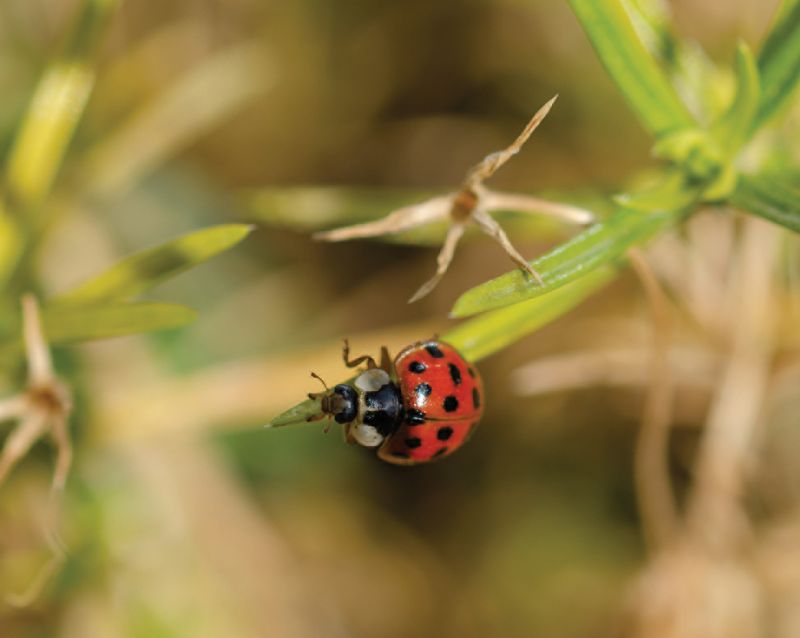- Home
- News, Articles & Reviews
We are hiring! Please click here to join our growing magazine delivery team in Gloucestershire!
Areas
Homes & Gardens
Archive

Wildlife-friendly pest control
All Areas > Homes & Gardens > In the Garden
Author: Daniel Hoggins, Posted: Monday, 26th May 2025, 09:00
June sees our gardens at their peak. The roses are all in bloom, the flower beds are bursting with colour, and our vegetable plots are burgeoning with the spoils of all our labour. But as good as it all looks to us, it is very tempting to the vast array of garden pests which delight in nibbling their way through this beautiful scene.
I thought it might be timely to have a look at some of the ways we can deal with these little critters without harming the other wildlife in our gardens. After all, these insects are only doing what insects do and can actually play a vital role in the garden’s ecosystem and support other insect species, mammals and birds.
Encourage other garden predators
One of the biggest pests in any garden is aphids. These can be removed manually or sprayed off with a hose, but the most rewarding way to deal with them in the long run is to encourage other garden insects which predate them into your garden. Ladybirds and hoverflies love to eat aphids and you can encourage them by planting flowering plants which they are attracted to, such as cosmos, fennel, yarrow, angelica and marigold. This way you get an excuse to go out and buy more plants, while better maintaining the ones you already have.
Wasps have a bad reputation
Wasps always seem to have a bad reputation. The phrase, ‘I get why bees exist, but what is the point of wasps?’ echoes throughout the land all summer long. Well, without wasps our gardens may well be overrun with garden pests. They do an invaluable job at scouring our gardens for aphids, grubs and caterpillars to eat and take to their larvae. If they can be tolerated, they really are best left to get on with it.
Try to avoid using slug pellets
There is nothing more annoying than when you have sown some seeds and watched them burst into life only to be eaten overnight by some belligerent slugs and snails. For this we reach for the slug pellets, and while this technique is very effective and more than a little righteously vengeful, it is never advisable to use this method anywhere that isn’t covered over such as a greenhouse, cold frame or an area under netting. This is because the pellets can either be eaten directly by hedgehogs and birds, or they can eat the poisoned slugs and die as a consequence.
For areas that are not under cover in the vegetable garden, manually removing slugs is a very effective method, as is adding beer traps, whereby you submerge a small container filled with beer into the ground and wait for the slugs to be lured into the liquid.Other Images
Copyright © 2025 The Local Answer Limited.
Unauthorized use and/or duplication of this material without express and written permission from this site's author and/or owner is strictly prohibited. Excerpts and links may be used, provided that full and clear credit is given to The Local Answer Limited and thelocalanswer.co.uk with appropriate and specific direction to the original content.More articles you may be interested in...


© 2025 The Local Answer Limited - Registered in England and Wales - Company No. 06929408
Unit H, Churchill Industrial Estate, Churchill Road, Leckhampton, Cheltenham, GL53 7EG - VAT Registration No. 975613000You are leaving the TLA website...
You are now leaving the TLA website and are going to a website that is not operated by us. The Local Answer are not responsible for the content or availability of linked sites, and cannot accept liability if the linked site has been compromised and contains unsuitable images or other content. If you wish to proceed, please click the "Continue" button below:




